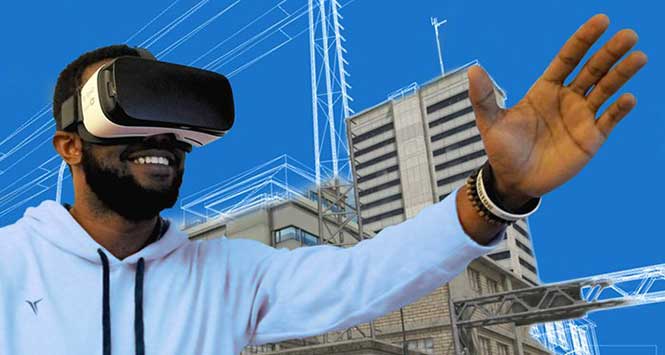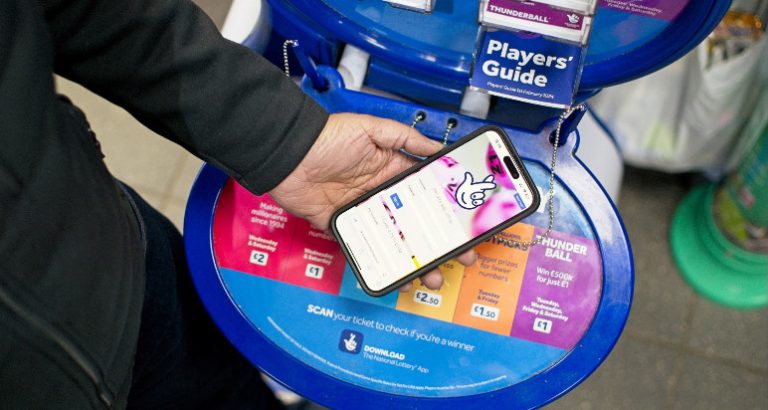Virtual Reality (VR) is set to make a real impact on local retailing in the very near future. Luke Merrick, Head of Learning at Glasgow-based Bolt Learning, explains how VR has many potential applications in improving the way modern c-stores are run.
The industry that Bolt Learning operates in, the learning and development industry, is currently a bit like a child with a cool new toy called ‘Virtual Reality’ that they don’t know how to use. There’s excitement, experimentation and a lot of enthusiasm, but not an awful lot of productive or practical implementation. This is all completely understandable and, I must admit, I’m also a VR fanboy. But how can you practically use VR in eLearning in your store a sustainable way?
Well, let me first try to clarify what VR is, how it can be used and then debunk some common misconceptions.
What exactly is VR?
Virtual Reality (VR) is a computer-generated environment within which the user is made to feel physically present. It’s been around in some form for years and enjoyed a notable boom in the 1990s before crashing rather abruptly. With the powerful computers, games machines and smartphones available now, VR is seeing a dramatic resurgence.
How is it used in eLearning?
VR is ideal for creating a virtual environment that mirrors reality. Whether it’s a building, an office space or, in the local retailing industry, a shop – it can be experienced in VR.
Within the virtual environment you can design tasks that the user must accomplish. The opportunity that VR presents in eLearning is that these tasks can be dangerous, difficult or time-consuming to practise – and make mistakes with – in the real world. It also suits tasks that require the environment to be set up in a way that is costly or difficult to do in real life. Remerchandising an entire fixture, for example, or even relaying the entire store to see if a different layout could work better for customer flow. Expensive and time-consuming in real-life, easy and quick in a virtual environment.
There are multitude of actions and tasks that a user can learn to do quickly, efficiently and safely through trial and error with VR. This allows the worker to develop skills before they need to put them into action for real.
Misconceptions
As with any new approach, our industry is still figuring out best training practice for this new technology. There are a few misconceptions that have already popped up for VR so here I make our contribution to the creation of best practice by busting some myths:
VR has to be done in separate, stand-alone solutions
Whilst we have yet to come across a use of VR that integrates well into a larger eLearning solution, it seems as though much of the focus within our industry currently is simply to produce stand alone VR. This short-term focus on getting VR up and running means that little attention has been given to integrating a VR experience into an eLearning module.
Additionally, most of the solutions to date also are either passive or require specialised equipment.
We think that this shouldn’t be the case, so we’ve done something about it. The VR experiences that we produce are experienced through an app on the user’s phone, and the user is prompted to access it at certain points in the eLearning module (obviously with alternatives available for those without a capable smart phone). The VR environment can be primed with parameters determined from the user’s progress throughout the eLearning. Once the user has completed the VR activity, the information of their experience is passed back into the module, allowing it to adapt to how the user got on within the VR. This means that VR experiences are fully integrated into the eLearning, and produce data that can be analysed such as what the user actually did, in what order they performed tasks and how long it took them to do each one.
Prohibitively expensive
Virtual Reality is expensive, right? You need several Oculus Rifts or HTC Vives, a dedicated room or two and you need to pay for 3D development. That adds up to a small fortune, surely?
Well, yes and no. You can choose to go high-end and prohibitively expensive if you want, but you can also go low-end and accessible. At Bolt we’ve developed a VR solution that works with a £15 headset and a modern smartphone – so there’s minimal up-front investment but it’ll also work with hardware such as the Oculus Rift and HTC Vive so those with the hardware can take full advantage. We’ve also been working on ways to optimise the development process to make it faster, cheaper and better for you.
You need a VR room
I’ve read a lot about amazing VR experiences that have a lot of ‘wow’ factor, and a bunch of my colleagues have experienced high-end demos in person. All of these have required specialist equipment and a dedicated space in a physical location.
The problem with this version of VR is that it makes the future of training look very much like the past – a training experience at a physical location with all of the inconveniences and costs attached. We believe that this should not be the case. Bolt is committed to sticking to its values of making eLearning electrifying and accessible from anywhere and at any time. This is why we’ve developed VR that works both on your mobile phone and on high-end equipment that has to be set up in a specific space.
Conclusion
Virtual Reality presents us with an incredible opportunity to train people in skills that previously would’ve been dangerous, difficult, expensive or just downright inconvenient to do in real life. We believe that VR experiences should be seamlessly integrated into eLearning, be a reasonable price and be accessible anywhere at any time.
Luke Merrick, Head of Learning at Glasgow-based Bolt Learning. Bolt Learning will be presenting and exhibiting at SLR’s #ThinkSmart2 Conference at the Glasgow Science Centre on March 19, 2018.





